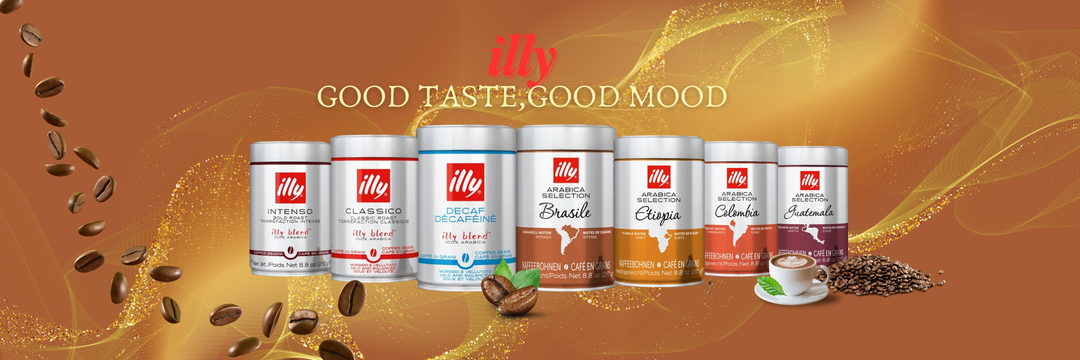What is the difference between Arabica and Robusta coffee beans?
What is the difference between Arabica and Robusta coffee beans?
Blog Article

When it comes to coffee, the beans you choose play a significant role in the flavor and aroma of your brew. Two of the most popular types of coffee beans are Arabica and Robusta. Though both come from the Coffea plant, these two varieties are quite different in terms of taste, cultivation, and overall experience. If you’ve ever wondered about the differences between these two beans, you’re in the right place! Let’s break down the key differences between Arabica and Robusta coffee beans.
1. Flavor Profile
Arabica coffee beans are known for their smooth, mild, and aromatic flavor profile. They are typically characterized by a slightly acidic, fruity, or floral taste with a more refined sweetness. Many coffee enthusiasts prefer Arabica beans for their complexity and subtlety, making them a popular choice for specialty coffees and single-origin brews.
On the other hand, Robusta beans are much bolder and stronger in flavor. They have a more bitter taste, with earthy, woody, and even nutty notes. Robusta is often described as having a sharper, more intense profile. It is a preferred choice for those who like their coffee strong, with a punch of bitterness, and is commonly used in espresso blends to provide body and richness.
2. Caffeine Content
One of the most notable differences between Arabica and Robusta beans is their caffeine content. Robusta beans have nearly twice the amount of caffeine as Arabica beans. This higher caffeine content gives Robusta coffee a stronger, more intense flavor. The increased caffeine level also makes Robusta beans more bitter, contributing to the bold, earthy flavors that define this variety.
In contrast, Arabica beans contain less caffeine, which is one reason why they have a smoother, less bitter taste. The lower caffeine content in Arabica beans results in a more mellow and less overpowering cup of coffee, making them the preferred choice for coffee drinkers who favor a subtler, less aggressive brew.
3. Shape and Size
When you look at Arabica and Robusta beans, you’ll notice differences in their size and shape. Arabica beans are generally larger, oval-shaped, and have a curved crease along the side. They are also more uniform in size and appearance.
In contrast, Robusta beans are smaller, rounder, and have a more irregular shape. The beans tend to have a straighter crease, and their outer appearance is less consistent than that of Arabica beans.
4. Growing Conditions
Arabica coffee plants thrive at higher altitudes, typically between 2,000 and 6,000 feet above sea level. They are more susceptible to pests, diseases, and temperature fluctuations, which makes them harder to cultivate. As a result, Arabica beans are typically grown in regions with a temperate climate, and the plants require more care and attention to produce high-quality beans.
On the other hand, Robusta coffee plants are hardier and can grow at lower altitudes. They are more resistant to pests, diseases, and varying weather conditions, which makes them easier and less expensive to cultivate. Robusta beans are often grown in hotter, more humid climates and are more resilient to environmental stressors.
5. Price and Availability
Because Arabica coffee is more difficult to grow and requires more attention, it tends to be more expensive than Robusta coffee. Arabica beans are considered the “premium” variety and are commonly used in specialty coffees. The demand for high-quality Arabica beans also contributes to their higher price point.
In contrast, Robusta beans are cheaper to produce, which makes them more affordable for coffee drinkers. As a result, Robusta coffee is often found in mass-market blends, instant coffee, and lower-cost coffee products. Despite being more affordable, Robusta is still used in many espresso blends due to its ability to add depth and body to the coffee.
6. Which One Should You Choose?
The choice between Arabica and Robusta largely comes down to personal preference. If you enjoy a smooth, well-balanced cup of coffee with a mild flavor and a touch of acidity, Arabica beans are the way to go. Their complex and aromatic flavor profile makes them ideal for a variety of brewing methods, from pour-over to French press.
On the other hand, if you prefer a strong, bold, and robust cup of coffee with a slightly bitter taste, Robusta might be more your style. Robusta is perfect for those who like a more powerful coffee experience, and it’s often favored in espresso blends for its ability to add a rich crema and body to the brew.
Conclusion
Both Arabica and Robusta have their own unique characteristics that make them stand out. Arabica is known for its smooth, flavorful profile and lower caffeine content, while Robusta is recognized for its bold, earthy taste and higher caffeine concentration. Whether you choose Arabica for its subtlety and complexity or Robusta for its boldness and strength, both types of beans offer a distinctive coffee experience that caters to different tastes and preferences.
So the next time you're choosing your coffee, consider what type of brew you're looking for and let the differences between Arabica and Robusta guide you to the perfect cup.
Shop Coffee Beans Now at Coffee Beans Australia! Report this page